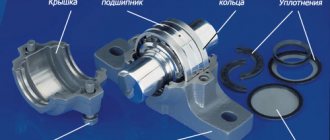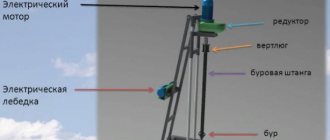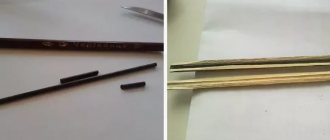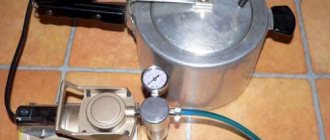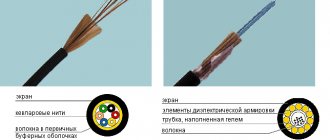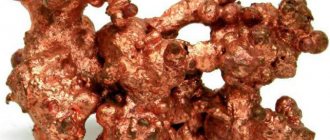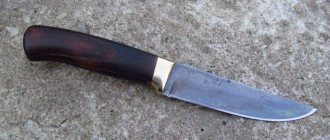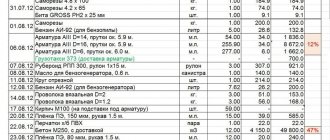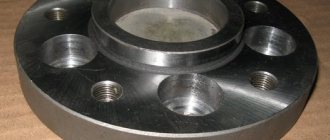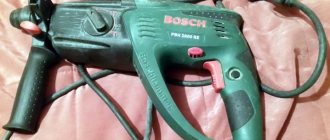Varieties
There are three large groups, we will tell you more about each of them below.
Radial
Between two cages with technological grooves there are rolling elements in one or two rows, fixed in the cage. All this must be lubricated or covered with a protective casing to prevent dirt from entering.
A similar model is where the outer hoop is processed from the inside into a hemisphere, but the axis of the housing hole and the rotation shaft are not fixed. This technical solution is used in agricultural machinery when it is impossible or impractical to combine the planes of rotation and fastening. They are called floating.
Radial ball single row bearing, table of sizes and series
| ISO | Analogue GOST | Inner diameter(mm) | External mm | Width(mm) | Weight(kg) |
| 691 | 1000091 | 1 | 4 | 1,6 | 0,0001 |
| 602 | 12 | 2 | 7 | 2,8 | 0,0006 |
The parameters range from three millimeters to several meters. Internal holes make it possible to achieve rotation of the axes from 1 ml, this is used in micromechanics (hand and wall clocks, printers, scanners, measuring instruments, computers, disk drives, coolers). One and a half meter turning points work on heavy mining equipment (excavators, loaders, tunneling machines), on screw drives in shipbuilding, anywhere where large masses are required to be moved.
Supporting
For high loads along the axis of rotation, parts are used that consist of two washers with a groove, between which a separator with spheres is placed. One of the rotation planes rests on the block, and the second surface is fixed on the shaft. They are used in the manufacturing industry, wind turbines and other structures where longitudinal loads exist.
Table of dimensions of thrust ball bearings in millimeters
| Named. ISO | Russia GOST | Parameters in mm dw dg Dg T | Tonnage (Kn)Dyn. Stat. | Weight |
| 54202 | 48202 | 10 17 32 24 | 16,6 24,6 | 0,088 |
| 54205 | 38405 | 5 27 60 45 | 55,6 89,4 | 0,63 |
| 52205 | 38205 | 20 27 47 28 | 27,6 50 | 0,22 |
| 54406 | 48406 | 20 30 70 52 | 72,8 125 | 1 |
Such devices work on the A-pillars of cars and allow the entire rotating unit to move smoothly, constantly supporting the entire weight of the car. Manipulation of the crane boom is ensured by support on a similar product. The junction of a semi-trailer and a heavy-duty tractor also operates on the same principle. In an industry where it is necessary to use strong impacts on materials, not a single machine can do without thrust units.
Support-radial
In cases where it is necessary to provide properties of two types in the model, this mechanism is used. The reaction of the rolling elements is directed both perpendicularly and along the axis. The design can be single or double row.
Due to the combination of multidirectional reactions to force, a product consisting of two such parts provides complete fixation in space. When designing, you can get by with one compact device. The structural features allow for long-term operation without maintenance. Accordingly, the final cost of the product is reduced.
All the types described above are in the trade and production catalogue.
Accuracy class of bearing rolling elements - balls, rollers
Balloons:
There are 11 degrees of ball accuracy according to GOST 3722-2014: G 3; G 5; G 10; G 16; G 20; G 24; G 28; G 40; G 60; G 100; G 200. (listed in order of decreasing accuracy)
Accuracy classes of steel balls according to DIN 5401: G700, G600, G500, G300, G200, G100, G80, G40, G28, G20, G16, G10, G5, G3 (listed in order of increasing accuracy) The higher the accuracy of the ball, the less deviations from size and shape!
Rollers :
For short cylindrical rollers there are 6 degrees of accuracy: IV, IIIA,III, IIA, II, I. For long cylindrical rollers there are 3 degrees of accuracy: III, II, I. (in order of increasing accuracy)
Needles:
For needle rollers there are three degrees of accuracy: 4, 3, 2 (in order of increasing accuracy).
Preparation method
The main difficulty in production is the high requirements for precision processing of parts. Therefore, if assembly can be carried out by almost all organizations, the production of external races and rolling elements is always carried out at large specialized factories.
The process consists of:
- • Material preparation (quality check, rejection). Here parts that have flaws are removed: microcracks, cavities and foreign inclusions.
- • Formation of blanks. Washers are cut from round timber using a special automatic device, after which they are fed to a press, where a ring is obtained. Then they are sent for rolling and brought to sizes that roughly match the final sample. For each specific case, different molding mandrels are used. The result is a blank that roughly replicates the final product, only a little larger.
- • Machining by turning. The process involves specific machines with program numerical control. Human participation is reduced to a minimum, while the number of defects is reduced. Here the product is brought to the required parameters, achieving an accuracy of one hundred microns or higher.
- • Sanding. The operation allows you to achieve an accuracy of ten Mk or less. The surface acquires a characteristic glossy appearance, necessary for unhindered sliding.
- • Hardening. After this stage, the required performance qualities are achieved. The workpiece is subjected to heating and cooling according to the technological map. In other cases, cementation is used using high-frequency current, then the hardness will be non-uniform.
- • Labeling. Apply with a laser device or similar to welding.
- • Inspection by the Technical Control Department (QCD). In particularly critical batches, parts of the samples are subjected to random testing.
Materials for production
When equipment operates, all elements are subject to constant loads, such as mechanical deformation and friction. Therefore, there are a number of strict requirements for the raw materials used. The final product must meet a whole list of qualities:
- • abrasion resistance;
- • ability to maintain caliber;
- • hardness;
- • viscosity;
- • ability to resist repeated deformations.
High-carbon chromium steel is used as the starting material. It is equally good for both cages and the rolling element. But there are cases when the unit is operated under conditions of repeated shock loads. In this option, the parts are made from iron with a low carbon content. The creation of a hard surface is achieved by subsequent saturation. The result is a mechanism with a rigid outer layer and a viscous middle.
The main materials are steel:
- • chromium ShKh 15, 15 ST, 20 ST, ShKh 4;
- • cemented 18ХГТ, 20Х2Н4А, 15 Г 1, 15Х, 08, 10.
Bronze, aluminum, cast iron and plastic can be used to produce separators. This is due to the fact that the main problem is the friction of the rolling element against the race during operation. Deformation loads between these parts are insignificant. This device is designed to distribute evenly around the perimeter of the hoop.
Marking of spheres for ball bearings, their sizes and interpretation
The main value is the diameter, designated in the tables by the letter d. The industry produces models with dimensions from 0.25 to 150 mm.
To make it easier to work with friction-reducing units, the parameters of the links have been unified. The industry produces them in a strictly defined format. According to the accuracy class, the product is marked with numbers: 3; 5; 10; 16; 20; 28; 40; 60; 100; 200, which indicate the level of processing. The lower the value, the rougher the execution.
The standard weight is calculated from the steel density of 7.85 kilograms per decimeter. The letter H is placed in the marking before the linear gauge, in cases of use in standard rolling mechanisms. In other versions, the abbreviation B is used.
The size table for ball diameters of ball radial and roller bearings is given below
| Distance in mm | In inches | Weight 1000 pcs in kg |
| 0,300 | – | 0,00011 |
| 0,400 | – | 0,00026 |
| 0,600 | – | 0,00089 |
| 0,680 | – | 0,00129 |
Balls GOST 3722-81
STATE STANDARD OF THE USSR UNION Rolling bearings BALLS GOST 3722-81 ST SEV 1990-79)
This standard applies to balls used in rolling bearings and as separate parts.
The standard fully complies with ST SEV 1990-79.
1. MAIN DIMENSIONS 1.1. The dimensions and weight of the balls must correspond to the values indicated in the table. 1.
| Nominal ball diameter Dw | Weight 1000 pcs., kg ~ | Nominal ball diameter Dw | Weight 1000 pcs., kg ~ | Nominal ball diameter Dw | Weight 1000 pcs., kg ~ | Nominal ball diameter Dw | Weight 1000 pcs., kg ~ | ||||
| mm | Inch | mm | Inch | mm | Inch | mm | Inch | ||||
| 0,250 | — | 0,00008 | 6,000 | — | 0,887 | 19,000 | — | 28,2 | 45,000 | — | 374 |
| 0,300 | — | 0,00011 | 6,350 | 1/4 | 1,050 | 19,050 | 3/4 | 28,4 | 46,038 | 1 13/16 | 401 |
| 0,360 | — | 0,00016 | 6,500 | — | 1,130 | 19,844 | 25/32 | 32,1 | 47,625 | 1 7/8 | 444 |
| 0,397 | 1/64 | 0,00025 | 6,747 | 17/64 | 1,260 | 20,000 | — | 32,9 | 49,212 | 1 15/16 | 490 |
| 0,400 | — | 0,00026 | 7,000 | — | 1,410 | 20,638 | 13/16 | 36,1 | 50,000 | — | 514 |
| 0,500 | — | 0,00051 | 7,144 | 9/32 | 1,500 | 21,000 | — | 38,0 | 50,800 | 2 | 539 |
| 0,508 | — | 0,00054 | 7,500 | — | 1,730 | 21,431 | 27/32 | 40,4 | 52,388 | 2 1/16 | 591 |
| 0,600 | — | 0,00089 | 7,541 | 19/64 | 1,760 | 22,000 | — | 43,8 | 53,975 | 2 1/8 | 646 |
| 0,635 | — | 0,00105 | 7,938 | 5/16 | 2,060 | 22,225 | 7/8 | 45,1 | 55,000 | — | 684 |
| 0,680 | — | 0,00129 | 8,000 | — | 2,100 | 23,000 | — | 50,0 | 57,150 | 2 1/4 | 767 |
| 0,700 | — | 0,00141 | 8,334 | — | 2,380 | 23,019 | 29/32 | 50,1 | 60,000 | — | 887 |
| 0,794 | 1/32 | 0,00206 | 8,500 | — | 2,520 | 23,812 | 15/16 | 55,5 | 60,325 | 2 3/8 | 902 |
| 0,800 | — | 0,00210 | 8,731 | 11/32 | 2,730 | 24,000 | — | 56,8 | 61,912 | 2 7/16 | 975 |
| 0,840 | — | 0,00243 | 9,000 | — | 3,000 | 24,606 | 31/32 | 61,2 | 63,500 | 2 1/2 | 1052 |
| 0,850 | — | 0,00252 | 9,128 | 23/64 | 3,120 | 25,000 | — | 64,2 | 65,000 | — | 1128 |
| 1,000 | — | 0,00411 | 9,525 | 3/8 | 3,550 | 25,400 | 1 | 67,3 | 66,675 | 2 5/8 | 1218 |
| 1,191 | 3/64 | 0,00694 | 9,922 | 25/64 | 4,010 | 26,000 | — | 72,2 | 69,850 | 2 3/4 | 1400 |
| 1,200 | — | 0,00710 | 10,000 | — | 4,110 | 26,194 | 1 1/32 | 73,8 | 73,025 | 2 7/8 | 1600 |
| 1,300 | — | 0,00903 | 10,319 | 13/32 | 4,510 | 26,988 | 1 1/16 | 80,8 | 75,000 | — | 1733 |
| 1,500 | — | 0,0139 | 10,716 | 27/64 | 5,060 | 27,781 | 1 3/32 | 88,1 | 76,200 | 3 | 1818 |
| 1,588 | 1/16 | 0,0164 | 11,000 | — | 5,470 | 28,000 | — | 90,2 | 79,375 | 3 1/8 | 2054 |
| 1,984 | 5/64 | 0,0321 | 11,112 | 7/16 | 5,640 | 28,570 | 1 1/8 | 95,8 | 80,000 | — | 2103 |
| 2,000 | — | 0,0329 | 11,500 | — | 6,250 | 30,000 | — | 111 | 82,550 | 3 1/4 | 2311 |
| 2,381 | 3/32 | 0,0554 | 11,509 | 29/64 | 6,260 | 30,162 | 1 3/16 | 113 | 85,725 | 3 3/8 | 2588 |
| 2,500 | — | 0,0642 | 11,906 | 15/32 | 6,930 | 31,750 | 1 1/4 | 132 | 88,900 | 3 1/2 | 2886 |
| 2,778 | 7/64 | 0,0881 | 12,000 | — | 7,100 | 32,000 | — | 135 | 90,000 | — | 2995 |
| 3,000 | — | 0,111 | 12,303 | 31/64 | 7,650 | 32,544 | 1 9/32 | 142 | 92,075 | 3 5/8 | 3207 |
| 3,175 | 1/8 | 0,132 | 12,700 | 1/2 | 8,420 | 33,338 | 1 5/16 | 152 | 95,250 | 3 3/4 | 3550 |
| 3,500 | — | 0,176 | 13,000 | — | 9,030 | 34,000 | — | 162 | 98,425 | 3 7/8 | 3917 |
| 3,572 | 9/64 | 0,187 | 13,494 | 17/32 | 10,100 | 34,925 | 1 3/8 | 175 | 100,000 | — | 4108 |
| 3,969 | 5/32 | 0,257 | 14,000 | — | 11,300 | 35,000 | — | 176 | 101,600 | 4 | 4308 |
| 4,000 | — | 0,263 | 14,288 | 9/16 | 12,000 | 35,719 | 1 13/32 | 187 | 104,775 | 4 1/8 | 4725 |
| 4,366 | 11/64 | 0,342 | 15,000 | — | 13,900 | 36,000 | — | 192 | 107,950 | 4 1/4 | 5168 |
| 4,500 | — | 0,374 | 15,081 | 19/32 | 14,100 | 36,512 | 1 7/16 | 200 | 108,000 | — | 5175 |
| 4,763 | 3/16 | 0,444 | 15,875 | 5/8 | 16,400 | 38,000 | — | 225 | 110,000 | — | 5468 |
| 5,000 | — | 0,514 | 16,000 | — | 16,800 | 38,100 | 1 1/2 | 227 | 111,125 | 4 3/8 | 5637 |
| 5,159 | 13/16 | 0,564 | 16,669 | 21/32 | 19,000 | 39,688 | 1 9/16 | 257 | 114,300 | 4 1/2 | 6134 |
| 5,500 | — | 0,684 | 17,000 | — | 20,200 | 40,000 | — | 263 | 120,000 | — | 7100 |
| 5,556 | 7/32 | 0,705 | 17,462 | 11/16 | 21,900 | 41,275 | 1 5/8 | 289 | 127,000 | — | 8415 |
| 5,800 | — | 0,802 | 18,000 | — | 24,000 | 42,862 | 1 11/16 | 324 | 150,000 | — | 13865 |
| 5,953 | 15/64 | 0,867 | 18,256 | 23/32 | 25,000 | 44,450 | 1 3/4 | 361 | |||
1.2. The designation of balls used as individual parts must consist of the nominal diameter in millimeters, the degree of accuracy and the designation of this standard. The symbol for balls used in rolling bearings is supplemented by the letter H, placed before the designation of the nominal diameter. The symbol for balls that are not sorted by diameter is supplemented with the letter B before the designation of the nominal diameter. The deviation of the average diameter, the different sizes of balls in diameter in a batch, the variability of the unit diameter, the deviation from the spherical shape (without taking into account waviness) and the surface roughness should not exceed the values specified in the table.
| Degree of accuracy | Nominal ball diameter Dw, mm | Deviation of the average diameter of balls used as individual parts Dwm | Variation in the size of balls in diameter in the VDwL pariah | Variability of unit diameter VDws | Deviation from the spherical norm | Surface roughness | |
| Ra | Rz | ||||||
| µm, no more | |||||||
| 3 | From 0.25 to 12 | ± 5 | 0,13 | 0,08 | 0,08 | — | 0,100 |
| 5 | » 0,25 » 12 | ± 5 | 0,25 | 0,13 | 0,13 | 0,020 | 0,100 |
| 10 | » 0,25 » 25 | ± 9 | 0,50 | 0,25 | 0,25 | 0,020 | 0,100 |
| 16 | » 0,25 » 25 | ± 10 | 0,80 | 0,40 | 0,40 | 0,032 | 0,160 |
| 20 | » 0,25 » 38 | ± 10 | 1,00 | 0,50 | 0,50 | 0,040 | 0,200 |
| 28 | » 0,25 » 38 | ± 12 | 1,40 | 0,70 | 0,70 | 0,050 | 0,250 |
| 40 | » 0,25 » 50 | ± 16 | 2,00 | 1,00 | 1,00 | 0,080 | 0,400 |
| 60 | » 0,25 » 80 | ± 30 | 3,00 | 1,50 | 1,50 | 0,100 | 0,500 |
| 100 | » 0,25 » 120 | ± 40 | 5,00 | 2,50 | 2,50 | 0,125 | 0,600 |
| 200 | » 0,25 » 150 | ± 60 | 10,00 | 5,00 | 5,00 | 0,200 | 0,800 |
Notes:
1. Roughness values Rz are established for balls of the 3rd degree of accuracy of all diameters; for balls of other degrees of accuracy with Dw < 3 mm. 2. At the customer’s request, it is allowed to produce balls used in the form of separate parts with maximum deviations that differ from those indicated in the table.
Characteristic
They are divided into groups according to design features and areas of application. Each sample has its own parameters:
- • Dimensions include the size of the shaft and fit, the width of the holder.
- • Weight depends on the version.
- • Degree of protection (open, partially closed, completely sealed).
- • Permissible loads.
- • Possible revolutions.
Most of the information is encrypted in the markings. For example, a radial single row is signed like this:
- • the first field indicates the width;
- • variety in design;
- • configuration;
- • number 0;
- • data on diameters;
- • shaft fit standard.
Additional letters indicate technical features, such as row row and separator material.
Table of ball bearings by size, how to choose them
You can get detailed information on the trade and production website. They provide a wide range of similar products.
| ISO name | Russia analogue of GOST | Rolling distance | Number |
| 608 | 18 | 3,97 | 6 |
| 624 | 24 | 2,38 | 6 |
| 627 | 27 | 3,97 | 7 |
| 693 | 1000093 | 1,58 | 6 |
| 698 | 1000098 | 3 | 8 |
| 6001 | 101 | 4,76 | 8 |
ACCEPTANCE RULES
3.1. An acceptance inspection should be carried out to verify that the balls comply with the requirements of this standard.
3.2. During acceptance inspection, balls are checked for compliance with:
clause 2.2 - 0.03% of the lot (for balls with a diameter of up to 45 mm - no less than 5 pcs. and no more than 10 pcs.);
for balls with a diameter over 45 mm - at least 2 pcs. and no more than 5 pieces;
clauses 2.4 and 2.6 - 0.1% of the lot, but not less than 5 pcs. and no more than 50 pieces;
clause 2.7 - 0.03% of the lot, but not less than 5 pcs. and no more than 50 pieces;
table 4 - 3 pcs. from the party.
3.3. If the balls do not comply with at least one requirement of this standard, re-inspection of a double number of balls taken from the same batch is carried out according to the same parameters.
The results of re-inspection apply to the entire batch.
Metal Ball Usage Chart
| Caliber in mm | Marking | Number of peas in pieces |
| 1,587 | 13; 60113; 80213; 1060393; 1080093 | 6 |
| 33; 60223; 80123; 160023; 180023 | 7 | |
| 2,381 | 24; 60424; 80024; 160024; 180324 | 6 |
| 1000096; 1060096; 1080096 | 8 | |
| 1000802; | 12 | |
| 3,500 | 1002099; 1063099; 1080499 | 7 |
| 1050903 | 11 | |
| 1, 300 | 2003083 | 7 |
| 1006084 | 9 | |
| 2,000 | 1007094; 1060394; 1980494 | 7 |
| 1007095; 1060695; 1080595 | 8 | |
| 1007088 | 10 |
MAIN DIMENSIONS
1. MAIN DIMENSIONS
1.1. The dimensions and weight of the balls must correspond to the values indicated in Table 1.
Table 1
| Nominal ball diameter | Weight 1000 pcs., kg | |
| mm | inch | |
| 0,250 | — | 0,00008 |
| 0,300 | — | 0,00011 |
| 0,360 | — | 0,00016 |
| (0,397) | 0,00025 | |
| 0,400 | — | 0,00026 |
| 0,500 | — | 0,00051 |
| 0,508 | — | 0,00054 |
| 0,600 | — | 0,00089 |
| 0,635 | — | 0,00105 |
| 0,680 | — | 0,00129 |
| 0,700 | — | 0,00141 |
| (0,794) | 0,00206 | |
| 0,800 | — | 0,00210 |
| 0,840 | — | 0,00243 |
| 0,850 | — | 0,00252 |
| 1,000 | — | 0,00411 |
| (1,191) | 0,00694 | |
| 1,200 | — | 0,00710 |
| 1,300 | — | 0,00903 |
| 1,500 | — | 0,0139 |
| 1,588 | 0,0164 | |
| 1,984 | 0,0321 | |
| 2,000 | — | 0,0329 |
| 2,381 | 0,0554 | |
| 2,500 | — | 0,0642 |
| 2,778 | 0,0881 | |
| 3,000 | — | 0,111 |
| 3,175 | 0,132 | |
| 3,500 | — | 0,176 |
| 3,572 | 0,187 | |
| (3,969) | 0,257 | |
| 4,000 | — | 0,263 |
| 4,366 | 0,342 | |
| 4,500 | — | 0,374 |
| 4,763 | 0,444 | |
| 5,000 | — | 0,514 |
| 5,159 | 0,564 | |
| 5,500 | — | 0,684 |
| 5,556 | 0,705 | |
| 5,800 | — | 0,802 |
| (5,953) | 0,867 | |
| 6,000 | — | 0,887 |
| 6,350 | 1,05 | |
| 6,500 | — | 1,13 |
| 6,747 | 1,26 | |
| 7,000 | — | 1,41 |
| 7,144 | 1,50 | |
| 7,500 | — | 1,73 |
| (7,541) | 1,76 | |
| 7,938 | 2,06 | |
| 8,000 | — | 2,10 |
| 8,334 | — | 2,38 |
| 8,500 | — | 2,52 |
| 8,731 | 2,73 | |
| 9,000 | — | 3,00 |
| 9,128 | 3,12 | |
| 9,525 | 3,55 | |
| 9,922 | 4,01 | |
| 10,000 | — | 4,11 |
| 10,319 | 4,51 | |
| 10,716 | 5,06 | |
| 11,000 | — | 5,47 |
| 11,112 | 5,64 | |
| 11,500 | — | 6,25 |
| 11,509 | 6,26 | |
| 11,906 | 6,93 | |
| 12,000 | — | 7,10 |
| 12,303 | 7,65 | |
| 12,700 | 8,42 | |
| 13,000 | — | 9,03 |
| 13,494 | 10,1 | |
| 14,000 | — | 11,3 |
| 14,288 | 12,0 | |
| 15,000 | — | 13,9 |
| (15,081) | 14,1 | |
| 15,875 | 16,4 | |
| 16,000 | — | 16,8 |
| 16,669 | 19,0 | |
| 17,000 | — | 20,2 |
| 17,462 | 21,9 | |
| 18,000 | — | 24,0 |
| 18,256 | 25,0 | |
| 19,000 | — | 28,2 |
| 19,050 | 28,4 | |
| 19,844 | 32,1 | |
| 20,000 | — | 32,9 |
| 20,638 | 36,1 | |
| 21,000 | — | 38,0 |
| 21,431 | 40,4 | |
| 22,000 | — | 43,8 |
| 22,225 | 45,1 | |
| 23,000 | — | 50,0 |
| (23,019) | 50,1 | |
| 23,812 | 55,5 | |
| 24,000 | — | 56,8 |
| 24,606 | 61,2 | |
| 25,000 | — | 64,2 |
| 25,400 | 67,3 | |
| 26,000 | — | 72,2 |
| 26,194 | 73,8 | |
| 26,988 | 80,8 | |
| 27,781 | 88,1 | |
| 28,000 | — | 90,2 |
| 28,575 | 95,8 | |
| 30,000 | — | 111 |
| (30,162) | 113 | |
| 31,750 | 132 | |
| 32,000 | — | 135 |
| 32,544 | 142 | |
| 33,338 | 152 | |
| 34,000 | — | 162 |
| (34,925) | 175 | |
| 35,000 | — | 176 |
| 35,719 | 187 | |
| 36,000 | — | 192 |
| 36,512 | 200 | |
| 38,000 | — | 225 |
| (38,100) | 227 | |
| (39,688) | 257 | |
| 40,000 | — | 263 |
| 41,275 | 289 | |
| 42,862 | 324 | |
| 44,450 | 361 | |
| 45,000 | — | 374 |
| 46,038 | 401 | |
| 47,625 | 444 | |
| 49,212 | 490 | |
| 50,000 | — | 514 |
| 50,800 | 539 | |
| 52,388 | 591 | |
| 53,975 | 646 | |
| 55,000 | — | 684 |
| 57,150 | 767 | |
| 60,000 | — | 887 |
| 60,325 | 902 | |
| 61,912 | 975 | |
| 63,500 | 1052 | |
| 65,000 | — | 1128 |
| 66,675 | 1218 | |
| 69,850 | 1400 | |
| 73,025 | 1600 | |
| 75,000 | — | 1733 |
| 76,200 | 1818 | |
| 79,375 | 2054 | |
| 80,000 | — | 2103 |
| 82,550 | 2311 | |
| 85,725 | 2588 | |
| 88,900 | 2886 | |
| 90,000 | — | 2995 |
| 92,075 | 3207 | |
| 95,250 | 3550 | |
| 98,425 | 3917 | |
| 100,000 | — | 4108 |
| 101,600 | 4308 | |
| 104,775 | 4725 | |
| 107,950 | 5168 | |
| 108,000 | — | 5175 |
| 110,000 | — | 5468 |
| 111,125 | 5637 | |
| 114,300 | 6134 | |
| 120,000 | — | 7100 |
| 127,000 | — | 8415 |
| 150,000 | — | 13865 |
Notes:
1. The dimensions of the nominal diameters of the balls in millimeters, indicated in brackets, are not recommended for use.
2. Ball nominal diameters in inches are for reference only.
3. The mass of the balls is calculated at a steel density of 7.85 kg/dm.
1.2. The designation of balls used as individual parts must consist of the nominal diameter in millimeters, the degree of accuracy and the designation of this standard.
The symbol for balls used in rolling bearings is supplemented by the letter H, placed before the designation of the nominal diameter.
The symbol for balls that are not sorted by diameter is supplemented with the letter B before the designation of the nominal diameter.
Examples of symbols for balls used in the form of individual parts, with a nominal diameter of 5.8 mm, degree of accuracy 10:
Ball 5.8-10 GOST 3722-81
The same, balls used in rolling bearings, with a nominal diameter of 3.969 mm, accuracy degree 5:
Ball N 3.969-5 GOST 3722-81
The same, balls not sorted by diameter, with a nominal diameter of 9.525 mm, degree of accuracy 100:
Ball B 9.525-100 GOST 3722-81
1.3. At the customer's request, it is allowed to produce balls of sizes different from those indicated in Table 1, provided that the remaining requirements of this standard are met.
Parameters, characteristics and dimensions of ball bearings in the table.
| Type name | Marking | d | D | b | r | Weight, kg) |
| 60000 | 80000 | 3 | 10 | 4 | 0,3 | 0,002 |
| 60025 | 80025 | 5 | 16 | 0,5 | 0.006/td> | |
| 600200 | 80200 | 10 | 30 | 9 | 1,0 | 0,032 |
| 60203 | 80203 | 17 | 40 | 12 | 1,0 | 0,065 |
| 60205 | 80205 | 25 | 52 | 15 | 1,5 | 0,125 |
| 6027 | 8027 | 35 | 72 | 17 | 2,0 | 0,290 |
TECHNICAL REQUIREMENTS
2.1. Balls must be manufactured in accordance with the requirements of this standard according to working drawings approved in the prescribed manner.
2.2. The balls must be made of steel in accordance with GOST 801-78 and GOST 4727-83. Upon customer request, it is possible to manufacture balls from other grades of steel.
2.3. The balls must be heat treated:
to hardness - with a diameter of up to 45 mm;
to hardness - with a diameter of more than 45 mm.
2.4. There are 10 degrees of ball accuracy, designated in order of decreasing accuracy by numbers: 3; 5; 10; 16; 20; 28; 40; 60; 100; 200.
2.5. The deviation of the average diameter, the different sizes of balls in diameter in the batch, the variability of the unit diameter, the deviation from the spherical shape (without taking into account waviness) and the surface roughness should not exceed the values specified in Table 2.
table 2
| Degree of accuracy | Nominal ball diameter, mm | Deviation of the average diameter of balls used as individual parts | Variation in size of balls by diameter in a batch | Variability of a single diameter | Deviation from spherical shape | Surface roughness | |
| µm, no more | |||||||
| 3 | From 0.25 to 12 | ±5 | 0,13 | 0,08 | 0,08 | — | 0,100 |
| 5 | 0,25 » 12 | ±5 | 0,25 | 0,13 | 0,13 | 0,020 | 0,100 |
| 10 | 0,25 » 25 | ±9 | 0,50 | 0,25 | 0,25 | 0,020 | 0,100 |
| 16 | 0,25 » 25 | ±10 | 0,80 | 0,40 | 0,40 | 0,032 | 0,160 |
| 20 | 0,25 » 38 | ±10 | 1,00 | 0,50 | 0,50 | 0,040 | 0,200 |
| 28 | 0,25 » 38 | ±12 | 1,40 | 0,70 | 0,70 | 0,050 | 0,250 |
| 40 | 0,25 » 50 | ±16 | 2,00 | 1,00 | 1,00 | 0,080 | 0,400 |
| 60 | 0,25 » 80 | ±30 | 3,00 | 1,50 | 1,50 | 0,100 | 0,500 |
| 100 | 0,25 » 120 | ±40 | 5,00 | 2,50 | 2,50 | 0,125 | 0,600 |
| 200 | 0,25 » 150 | ±60 | 10,00 | 5,00 | 5,00 | 0,200 | 0,800 |
Notes
1. Roughness values are established for balls of the 3rd degree of accuracy of all diameters; for balls of other degrees of accuracy at mm.
2. At the customer’s request, it is allowed to produce balls used in the form of separate parts with maximum deviations that differ from those indicated in Table 2.
2.6. Deviations of the average diameter of balls of all degrees of accuracy used in rolling bearings are given in Table 3.
Table 3
| Nominal diameter of balls, mm | Deviations of the average diameter of the balls, mm, no more |
| From 0.25 to 1.5 | ±0,010 |
| 1,5 » 3 | +0,010 |
| -0,020 | |
| 3 » 6 | ±0,025 |
| 6 » 10 | ±0,050 |
| 10 » 18 | ±0,100 |
| 18 » 30 | ±0,150 |
| 30 » 150 | ±0,200 |
2.7. The balls must not have cracks, corrosion, or grinding annealing in the form of spots of secondary hardening and secondary tempering.
Not allowed are nicks, cavities, dents and risks visible to the naked eye with a normal level of vision under illumination of 300 lux from a distance of 0.5 m, as well as traces of decarburization identified by cold etching or flaw detection.
2.8. The balls must be demagnetized.
2.9. Balls with a diameter of 3 to 45 mm must withstand the breaking load test.
The breaking loads when testing balls must be no less than those indicated in Table 4 for the diameters given therein; for balls with other nominal diameters, the breaking loads must be no less than those established in Appendix 2.
Table 4
| Nominal ball diameter, mm | Breaking load, N (kgf), not less |
| 3,175 | 5394 (550) |
| 3,969 | 8434 (860) |
| 4,763 | 12062 (1230) |
| 5,556 | 16279 (1660) |
| 5,953 | 18142 (1850) |
| 6,350 | 21280 (2170) |
| 7,144 | 26968 (2750) |
| 7,938 | 32852 (3350) |
| 8,731 | 39717 (4050) |
| 9,128 | 43149 (4400) |
| 9,525 | 47071 (4800) |
| 9,922 | 51975 (5300) |
| 10,319 | 54917 (5600) |
| 10,716 | 59820 (6100) |
| 11,112 | 63743 (6500) |
| 11,509 | 68646 (7000) |
| 11,906 | 73549 (7500) |
| 12,303 | 78453 (8000) |
| 12,700 | 83356 (8500) |
| 13,494 | 94143 (9600) |
| 14,288 | 104931 (10700) |
| 15,081 | 116699 (11900) |
| 15,875 | 128467 (13100) |
| 16,669 | 142196 (14500) |
| 17,462 | 154945 (15800) |
| 18,256 | 168674 (17200) |
| 19,050 | 183384 (18700) |
| 19,844 | 199075 (20300) |
| 20,638 | 214766 (21900) |
| 21,431 | 220650 (22500) |
| 22,225 | 247128 (25200) |
| 23,019 | 257915 (26300) |
| 23,812 | 281451 (28700) |
| 25,400 | 318716 (32500) |
| 26,194 | 333426 (34000) |
| 26,988 | 357943 (36500) |
| 27,781 | 374614 (38200) |
| 28,575 | 397169 (40500) |
| 30,162 | 441299 (45000) |
| 31,750 | 487390 (49700) |
| 33,338 | 534462 (54500) |
| 34,925 | 582515 (59400) |
| 35,719 | 603109 (61500) |
| 36,512 | 632529 (64500) |
| 38,100 | 686465 (70000) |
| 39,688 | 735499 (75000) |
| 41,275 | 799242 (81500) |
| 42,862 | 853179 (87000) |
| 44,450 | 912018 (93000) |
2.10. Balls with a diameter greater than 45 mm must withstand a compression test. The test load during compression and the change in the diameter of the ball under the influence of this load, depending on the size of the ball, must correspond to the values indicated in Table 5.
Table 5
| Nominal ball diameter, mm | 46,038 | 50,8 | 60 | 76,2 | 100 | 101,6 | 150 |
| Load, kN (tf) | 63,7 (6,5) | 78,45 (8) | 98,07 (10) | 147,1 (15) | 245,17 (25) | 245,17 (25) | 490,33 (50) |
| Difference in diameter sizes measured before and after compression, µm, no more | 2,5 | 3 | 3 | 3 | 4 | 4 | 6 |
Scope of application
This node is widespread. Wherever the shaft rotates, one type or another is used. It allows you to extend service life, reduce friction losses and prevent overheating. Depending on the application conditions, the grease for ball bearings also differs.
Open models are used inside mechanisms, usually in the presence of liquid oils, such as Nigrol, Litol, Avtol. Lubrication and cooling occurs due to circulation within the structure. Closed models are supplied from factories already processed and refractory. In special cases, graphite is used, which has the property of reducing friction.
How to disassemble a spherical ball bearing: video
At first glance, it is not clear how the rolling elements can get between the races. In fact, the process goes like this:
- The separator is removed. Usually the two halves are fastened with rivets, which are removed by drilling.
- After this, the remaining insides are rolled close to each other and the ring is freely removed.
The radial support device allows you to remove two halves of the hoop. The floating one is easily separated after removing a few metal peas. This is achieved by extending the antennae that hold them in place. In samples with a bronze divider, a special technological hole is made, from which dismantling begins.
How different types of ball bearings are assembled: photo
The inner ring is placed in place when the rolling elements are assembled flush together. After this, they are distributed evenly around the perimeter, and a structure is placed on them on both sides, fixing the position, and the halves are fastened together with rivets.
Technology does not allow adding more, because assembly will become impossible. If a lot of pressure is created on the assembly, then the developers place a larger number of balls, but for this they have to make a technological hole in one of the cages. With this assembly method, the area of support is doubled. Fixation is carried out using a bronze device. The disadvantage is the high cost.
Model with a spherical body. In this case, we can rotate the inner ring ninety degrees relative to the outer one. If four peas are missing from the set, then the entire assembly can be easily removed and inserted. This becomes clear from the photo. Installation on the inner surface is carried out by bending the holding antennae.
For centuries, humanity has been using products such as ball bearings. In ancient times they had a primitive appearance. Nowadays, these products have been improved. Most machines, equipment and components use ball bearings.
History of origin
The bearing is a part that was invented quite a long time ago. The first finds that can be considered as prototypes of modern ball bearings date back to the Stone Age. At that time, ancient man already had the skills to drill holes in stone. Thanks to them, the first sliding bearing was created. The predecessors of the modern roller bearing in ancient times were wooden logs that people used to move heavy loads. They were actively used in Ancient Egypt, where they were used to move heavy stones to the construction site of the pyramids.
In 330 BC, the first prototype of a rolling bearing was invented. It was invented by Diad, an engineer who lived during the times of ancient Greece. Leonardo da Vinci used rolling bearings in his inventions. Metal bearings close to modern designs appeared in 1785. England is considered to be the birthplace of their invention. It was only at the end of the 19th century that mass production of ball bearings began. This was largely due to the introduction of abrasive processing.
If we talk about a turning point in the history of these products, then 1853 is that year. It was at this time that the engineer Friedrich Fischer designed the first bearing bicycle . After some time, in the 20s of the 19th century, roller bearings became widely used. A few decades later, needle and tapered bearings appeared.
Bearing classification
Currently, bearings are generally understood as parts of different diameters and sizes, made of metal, which are components of a support that support various movable structures. If we talk about the main function of a ball bearing, it is to transfer loads from a moving unit to other structural elements with less resistance.
At the moment, there are several varieties of these products, differing in operating principles. Based on this criterion, they are usually divided into the following types:
- rolling;
- slip;
- gas-dynamic;
- dynamic;
- magnetic.
In the mechanical engineering industry, two types of these products are most widespread:
Next, we will take a closer look at what kind of device a ball bearing has.
Speaking about its design, it is necessary to note two rings that act as the main elements. In addition, a component of such products is a rolling body and a separator. Note that some bearings do not have a cage.
Rolling bearings of different diameters and sizes , which do not have a cage, have a high load capacity. However, they have low speed characteristics. The raceways in such products are located on the end surface of the ring, as well as inside it. When products operate, the rolling body moves along them.
Let's talk about the accuracy class of the bearing in a simpler way.
In any sports store - in the spare parts department for roller skates or skateboards - 608 bearings are sold in three classes - ABEC 3, ABEC 5 and ABEC 7. A competent seller will say that the higher the class, the higher the quality and therefore the higher the price. In fact, ABEC classes (1, 3, 5, 7, 9) define only tolerances, that is, deviations from the main specified dimensions.
ABEC is a bearing classification system adopted in the USA and widely used in the skateboarding world.
Tolerances affect quality, but to a much lesser extent than, for example, the materials from which the parts are made, the design of the caps and the type of lubricant, or how well the tracks on which the balls roll are polished. Equally important is how tightly the bearing fits on the axle and sits in the wheel: losses in fit lead to losses in speed.
Experts will say that it is not the class that is more important, but the manufacturer of the bearings. The difference between ABEC 1 and ABEC 5 can be felt if you accelerate to, say, 32,000 rpm, that is, to a speed of more than 500 km/h.
Classification of rolling bearings
Rolling bearings can be classified into several types. Based on such a parameter as the type of rolling, these products are divided into ball and roller.
Based on the criterion of perceived loads, these products are divided into the following types:
Based on such a parameter as the number of rolling rows , these products are divided into:
The state standard divides these products into 11 types. Important characteristics are the outer and inner diameters and thickness. The quality of workmanship is of great importance, since the machine’s efficiency, performance and service life depend on it. On modern machines, contact products are most often installed, and along with them, non-contact bearings of different diameters and sizes.
GOST, ISO, ABEC standards
GOST Interstate standard GOST 520-2002 (Rolling bearings. General technical conditions). Adopted by the Interstate Council for Standardization, Metrology and Certification in 2002. Valid in the countries: Republic of Azerbaijan, Republic of Armenia, Republic of Belarus, Republic of Kazakhstan, Kyrgyz Republic, Republic of Moldova, Russian Federation, Republic of Tajikistan, Turkmenistan, Republic of Uzbekistan, Ukraine.
ISO (International Organization for Standardization) - “International Organization for Standardization.” The international standard ISO-492 is in force.
ABEC (Annular Bearing Engineering Committee) is a bearing development committee that is part of the American Bearing Manufacturers Association (ABMA). The ABEC marking is used to indicate the manufacturing accuracy of precision bearings.
Main types of products
Radial ball bearings are a component with a wide range of applications. They can be used in conditions where it is not possible to apply persistent modifications. These products are designed for radial load . In addition, they are able to withstand small axial loads. One of their features is good speed performance. However, they cannot withstand shaft distortions. In addition, they have a low load capacity. If we talk about the leaders in the production of these products, then these are companies from Sweden and Japan.
Thrust ball bearings are products of a certain diameter, designed to operate under axial load. This type of ball bearings cannot withstand radial loads. They are characterized by high speed qualities, but their load capacity is quite low.
Single row thrust bearing
One of their features of such products is that they can be operated under light loads and low speeds . The state standard divides this type of product into single and double.
Radial thrust bearings are similar in design to radial thrust bearings. The main difference between these products is that they must work simultaneously with both axial and radial loads. If these conditions are not met, then such products will not be able to be used. When used, they provide good speed.
It must be said that these products can be combined into duplexes and triplexes. This provides them with the ability to withstand axial and radial loads simultaneously. This variety is widely used in the production of machine tools and in the automotive industry.
Double row radial bearings
This type of product was invented in 1907. The inventor of this type of product was Sven Vingquist. He later became the founder and head of the Swedish company SKF. Thanks to his invention, it became possible to transfer all the power from one steam engine to weaving machines located in the workshop. The invention created by the engineer was based on a ball bearing. However, the product had certain differences. The main thing was that it had a spherical surface located on the outer ring. This makes it possible for the tides to function. Due to this, he could work with bending and misalignment of the shafts.
Spherical ball bearing
Products of this type are characterized by a high degree of susceptibility to radial loads. In addition, such a product, which could be of a certain diameter, is only able to withstand minor axial loads. The name of these products is associated with the presence on their inner surface of an outer ring having a spherical surface. The spherically machined raceway allows the product to self-align. These products can be used in units equipped with non-rigid shafts.
LABELING, PACKAGING, TRANSPORTATION AND STORAGE
5.1. To protect against corrosion, the balls must be preserved and stored in conditions that comply with GOST 9.014-78.
At the request of the consumer, it is allowed to use preservation methods and storage conditions not provided for by GOST 9.014-78.
5.2. Balls of one batch, except those intended for own production, after preservation, are packaged in cardboard boxes lined with waxed paper or plastic film, or plastic boxes, and then in boxes in accordance with GOST 16148-79. It is allowed to use other types of transport containers that ensure the safety of the internal packaging, do not allow droplets of liquid moisture to get inside and do not emit corrosive substances,
The boxes must be lined from the inside with bituminous paper in accordance with GOST 515-77 or polymer film in accordance with GOST 16272-79, GOST 10354-82 or other materials (paper, film, etc.) that ensure the safety of the balls.
5.3. After preservation, balls weighing more than 1.3 kg are wrapped in moisture-proof material and packed in individual boxes.
After preservation, balls with a diameter of up to 1.5 mm are packaged in plastic tubes and then in boxes. It is allowed to pack test tubes in one box and boxes with balls of the same nominal diameter, the same degree of accuracy, but with different deviations in the average diameter of the balls, in one box.
Balls with a diameter of over 20 mm may be packed in boxes without boxes.
The placement of the balls in a box or test tube must be tight so that they do not move during transportation.
5.4. The weight of the box with packed balls should not exceed 50 kg. After filling, the boxes must be covered with a steel strip.
5.5. A passport is inserted into each box or test tube with balls, which must indicate:
name or trademark of the manufacturer;
symbol of balls;
average deviation from the nominal diameter of balls in a batch;
mass or number of balls;
preservation date (month, year);
technical control stamp of the manufacturer.
5.6. After placing the balls in them, the boxes can be covered with a parcel post. The parcel or box must indicate:
name or trademark of the manufacturer;
symbol of balls;
average deviation from the nominal diameter of balls in a batch;
mass or number of balls;
preservation date (month, year).
Note. It is allowed to replace the parcel with other packaging means that ensure the safety of the packaging. In this case, the data given in clause 5.5 must be printed on the box or label.
5.7. The boxes must be packed tightly into the box to prevent them from moving during transportation.
The voids in the box should be filled with paper or cardboard waste.
5.8. Each box must contain a passport indicating:
name or trademark of the manufacturer:
symbol of balls;
mass or number of balls;
preservation date (month, year);
technical control stamp of the manufacturer.
5.9. Transport markings (main, additional, informational inscriptions and handling signs) must be applied to the label or directly to the box in accordance with GOST 14192-77.
Additionally you should indicate:
name or trademark of the manufacturer;
symbol of balls;
number or mass of balls;
manipulation signs: “Caution, fragile!” “Afraid of dampness” according to GOST 14192-77.
5.10. Balls should be transported by means that ensure their safety and protection from precipitation. It is allowed to transport balls in packages from boxes, laid according to a certain pattern on a pallet or without it, covered with metal tape or other material that ensures the shape of the package remains unchanged during transportation.
5.11. The consumer should store the balls in the warehouse only in the packaging of the manufacturer. The warehouse premises must have a constant temperature (20±5) °C and a relative humidity of no more than 70%.
Production and prices
The manufacture of products such as ball bearings is a rather complex technological process. It includes several stages. The most difficult part is making the balls themselves.
The first stage is stamping blanks . Steel wire is used to form them. After this, the workpieces are rolled in order to give them a spherical shape and a certain diameter.
The second stage is the processing of the balls before hardening. During this stage, abrasive processing of the balls occurs. After this, the tumbled balls are subjected to heat treatment.
Ball grinding is the final stage of production. This procedure is performed on a grinding machine. When the operation is completed, the finished products are sent for washing. After this, they are monitored. Next, sorting is carried out into selection groups depending on diameter, followed by packaging.
The demand for ball bearings of different diameters today is quite high. Consumers who are interested in purchasing them, of course, have questions regarding their cost. It must be said that the price of ball bearings can vary. It varies from 19 to 6.5 thousand rubles. The price of the product is influenced by the bearing brand, diameter and manufacturer.
Bearings by numbers and rolling elements by size
| Bearing GOST | Rolling element type | Diameter D, mm. | In bearing pcs. | Weight 1000pcs, kg. | steel grade |
| 118 | Balloons | 14.288 mm. | 14 pcs. | 12 kg. | ШХ15 |
| 119 | Balloons | 14.288 mm. | 14 pcs. | 12 kg. | ШХ15 |
| 120 | Balloons | 14.288 mm. | 15 pcs. | 12 kg. | ШХ15 |
| 211 Yu | Balloons | 14.288 mm. | 10 pieces. | 12 kg. | 95Х18Ш |
| 211 | Balloons | 14.288 mm. | 10 pieces. | 12 kg. | ШХ15 |
| 211 R | Balloons | 14.288 mm. | 10 pieces. | 12 kg. | EI-347 |
| 307 | Balloons | 14.288 mm. | 7 pcs. | 12 kg. | ШХ15 |
| 824 | Balloons | 14.288 mm. | 23 pcs. | 12 kg. | ШХ15 |
| 1217 | Balloons | 14.288 mm. | 42 pcs. | 12 kg. | SHH-15 |
| 1310 | Balloons | 14.288 mm. | 26 pcs. | 12 kg. | SHH-15 |
| 1516 | Balloons | 14.288 mm. | 40 pcs. | 12 kg. | SHH-15 |
| 1608 | Balloons | 14.288 mm. | 24 pcs. | 12 kg. | SHH-15 |
| 8309 | Balloons | 14.288 mm. | 13 pcs. | 12 kg. | ШХ15 |
| 11215 | Balloons | 14.288 mm. | 42 pcs. | 12 kg. | SHH-15 |
| 11309 | Balloons | 14.288 mm. | 26 pcs. | 12 kg. | SHH-15 |
| 36118 | Balloons | 14.288 mm. | 20 pcs. | 12 kg. | ШХ15 |
| 36211 | Balloons | 14.288 mm. | 14 pcs. | 12 kg. | ШХ15 |
| 46118 E | Balloons | 14.288 mm. | 20 pcs. | 12 kg. | ШХ15 |
| 46118 | Balloons | 14.288 mm. | 21 pcs. | 12 kg. | ШХ15 |
| 46211 | Balloons | 14.288 mm. | 14 pcs. | 12 kg. | ШХ15 |
| 46307 B | Balloons | 14.288 mm. | 10 pieces. | 12 kg. | ШХ15 |
| 46307 | Balloons | 14.288 mm. | 11 pcs. | 12 kg. | ШХ15 |
| 50118 | Balloons | 14.288 mm. | 14 pcs. | 12 kg. | ШХ15 |
| 50211 | Balloons | 14.288 mm. | 10 pieces. | 12 kg. | ШХ15 |
| 50307 | Balloons | 14.288 mm. | 7 pcs. | 12 kg. | ШХ15 |
| 50706 | Balloons | 14.288 mm. | 7 pcs. | 12 kg. | ШХ15 |
| 60118 | Balloons | 14.288 mm. | 14 pcs. | 12 kg. | ШХ15 |
| 60120 | Balloons | 14.288 mm. | 15 pcs. | 12 kg. | ШХ15 |
| 60211 | Balloons | 14.288 mm. | 10 pieces. | 12 kg. | ШХ15 |
| 60307 | Balloons | 14.288 mm. | 7 pcs. | 12 kg. | ШХ15 |
| 66211 | Balloons | 14.288 mm. | 14 pcs. | 12 kg. | ШХ15 |
| 80118 | Balloons | 14.288 mm. | 14 pcs. | 12 kg. | ШХ15 |
| 80120 | Balloons | 14.288 mm. | 15 pcs. | 12 kg. | ШХ15 |
| 80211 | Balloons | 14.288 mm. | 10 pieces. | 12 kg. | ШХ15 |
| 80307 | Balloons | 14.288 mm. | 7 pcs. | 12 kg. | ШХ15 |
| 111217 | Balloons | 14.288 mm. | 42 pcs. | 12 kg. | ШХ15 |
| 111310 | Balloons | 14.288 mm. | 26 pcs. | 12 kg. | ШХ15 |
| 111608 | Balloons | 14.288 mm. | 24 pcs. | 12 kg. | ШХ15 |
| 116211 | Balloons | 14.288 mm. | 13 pcs. | 12 kg. | ШХ15 |
| 126211 R | Balloons | 14.288 mm. | 14 pcs. | 12 kg. | EI-347 |
| 150211 | Balloons | 14.288 mm. | 10 pieces. | 12 kg. | ШХ15 |
| 150307 | Balloons | 14.288 mm. | 7 pcs. | 12 kg. | ШХ15 |
| 160118 | Balloons | 14.288 mm. | 14 pcs. | 12 kg. | ШХ15 |
| 160211 | Balloons | 14.288 mm. | 10 pieces. | 12 kg. | ШХ15 |
| 170307 | Balloons | 14.288 mm. | 7 pcs. | 12 kg. | ШХ15 |
| 176211 | Balloons | 14.288 mm. | 14 pcs. | 12 kg. | ШХ15 |
| 176211 R | Balloons | 14.288 mm. | 14 pcs. | 12 kg. | EI-347 |
| 176307 | Balloons | 14.288 mm. | 10 pieces. | 12 kg. | ШХ15 |
| 178826 | Balloons | 14.288 mm. | 58 pcs. | 12 kg. | ШХ15 |
| 178828 | Balloons | 14.288 mm. | 64 pcs. | 12 kg. | ШХ15 |
| 180118 | Balloons | 14.288 mm. | 14 pcs. | 12 kg. | ШХ15 |
| 180211 | Balloons | 14.288 mm. | 10 pieces. | 12 kg. | ШХ15 |
| 180307 | Balloons | 14.288 mm. | 7 pcs. | 12 kg. | ШХ15 |
| 180607 | Balloons | 14.288 mm. | 7 pcs. | 12 kg. | ШХ15 |
| 180707 | Balloons | 14.288 mm. | 7 pcs. | 12 kg. | ШХ15 |
| 236211 | Balloons | 14.288 mm. | 28 pcs. | 12 kg. | ШХ15 |
| 276211 | Balloons | 14.288 mm. | 14 pcs. | 12 kg. | ШХ15 |
| 276211 R | Balloons | 14.288 mm. | 14 pcs. | 12 kg. | EI-347 |
| 276307 | Balloons | 14.288 mm. | 22 pcs. | 12 kg. | ШХ15 |
| 436118 | Balloons | 14.288 mm. | 40 pcs. | 12 kg. | ШХ15 |
| 436211 | Balloons | 14.288 mm. | 28 pcs. | 12 kg. | ШХ15 |
| 446211 | Balloons | 14.288 mm. | 28 pcs. | 12 kg. | ШХ15 |
| 446307 B | Balloons | 14.288 mm. | 20 pcs. | 12 kg. | ШХ15 |
| 450211 | Balloons | 14.288 mm. | 10 pieces. | 12 kg. | ШХ15 |
| 450307 | Balloons | 14.288 mm. | 7 pcs. | 12 kg. | ШХ15 |
| 460807 | Balloons | 14.288 mm. | 13 pcs. | 12 kg. | ШХ15 |
| 460808 | Balloons | 14.288 mm. | 14 pcs. | 12 kg. | ШХ15 |
| 466307 | Balloons | 14.288 mm. | 22 pcs. | 12 kg. | ШХ15 |
| 530211 | Balloons | 14.288 mm. | 10 pieces. | 12 kg. | ШХ15 |
| 750118 | Balloons | 14.288 mm. | 14 pcs. | 12 kg. | ШХ15 |
| 750211 | Balloons | 14.288 mm. | 10 pieces. | 12 kg. | ШХ15 |
| 750307 | Balloons | 14.288 mm. | 7 pcs. | 12 kg. | ШХ15 |
| 920923 | Balloons | 14.288 mm. | 23 pcs. | 12 kg. | ШХ15 |
| 950118 | Balloons | 14.288 mm. | 21 pcs. | 12 kg. | ШХ15 |
| 950119 | Balloons | 14.288 mm. | 23 pcs. | 12 kg. | ШХ15 |
| 998705 | Balloons | 14.288 mm. | 8 pcs. | 12 kg. | ШХ15 |
| 1000840 | Balloons | 14.288 mm. | 21 pcs. | 12 kg. | ШХ15 |
| 1160211 | Balloons | 14.288 mm. | 10 pieces. | 12 kg. | ШХ15 |
| 1180211 | Balloons | 14.288 mm. | 10 pieces. | 12 kg. | ШХ15 |
| 1580211 | Balloons | 14.288 mm. | 10 pieces. | 12 kg. | ШХ15 |
| 2180120 | Balloons | 14.288 mm. | 15 pcs. | 12 kg. | ШХ15 |
| 2310118 | Balloons | 14.288 mm. | 14 pcs. | 12 kg. | ШХ15 |
| 3166118 | Balloons | 14.288 mm. | 42 pcs. | 12 kg. | ШХ15 |
| 3286308 | Balloons | 14.288 mm. | 24 pcs. | 12 kg. | ШХ15 |
| 7568148 | Balloons | 14.288 mm. | 50 pcs. | 12 kg. | ШХ15 |
| 9218407 | Balloons | 14.288 mm. | 12 pcs. | 12 kg. | ШХ15 |
Bearing balls are an integral part of the part, without which its functioning is simply impossible.
The production of such balls is highly precise. During the manufacturing process, it is necessary to achieve specific ball sizes so that friction during bearing operation is minimal. As a rule, the manufacture of this part is carried out by separate qualified personnel using special equipment. At the same time, the production cycle for producing balls can be completely different, depending on the materials used. For example, ceramic balls should have less weight, and also not lose resistance to deformation and temperature during processing. Therefore, their production takes a little longer. Materials used to produce balls
For the manufacture of these small and technologically complex parts, only high-quality steel is used:
- Molybdenum steel is known to many hunters. Fractions are made from it, and of course balls for bearings. Most often, it is not used in its pure form, but a little copper, cermets, brass, aluminum, and polymers are added.
- Balls made of chromium-carbon steel have increased strength and hardness. This material is quite expensive, so it is often used for special-purpose bearings.
- The synthetic metal alloy is often used in ball bearings. A special property of silicon nitride is that products made from it are capable of self-reinforcement.
Balls made of steel are most often used in rolling units. Such ball bearings are indispensable in agricultural activities, where the strength of the part is important. They are suitable for the automotive industry. Often used in various devices for the production of confectionery products and paints and varnishes. In household use, you can find bearings with steel balls in a regular pen refill. Various warehouse equipment, for example, a lift, a hydraulic trolley, cannot do without such ball bearings. The mechanisms of door handles and other furniture fittings also use bearings with steel balls.
If the bearing is used in an aggressive environment, its balls are made of an alloy with a high nickel content. And in case of extreme conditions, rolling elements are made from ceramics.
How are ball bearings made?
As previously mentioned, balls are one of the most technologically complex parts in a bearing design. Their production occurs in several stages:
- First, the ball blanks are stamped. Piece blanks are formed on special machines, but not all of them immediately take the desired shape; some of them have deviations and various protrusions. After this, the resulting blanks are rolled until they take the desired spherical shape.
- The resulting workpieces are processed before hardening by subjecting them to abrasive processing. Under high pressure, the workpieces are repeatedly rolled, as a result of which the product acquires a spherical shape with an allowance. And after this comes heat treatment of the parts. At this stage, the balls are heated, hardened and annealed in special furnaces. The output is smooth and hard balls.
- After this, the resulting balls are ground to the desired size on a grinding machine. The products are driven through the grooves several times, as a result of which they are completely polished to the required accuracy. High-precision models are subject to additional fine-tuning. The finished balls are washed, sorted into groups and packaged.
Bearing ball manufacturers
Balls for bearings can be purchased from both Russian and foreign manufacturers. They are manufactured in Saratov, Samara, at Moscow Bearing OJSC, in Tomsk, Yekaterinburg and other cities of Russia. As for foreign manufacturers, bearing balls from Germany, China, Slovakia, India, Japan, etc. are on sale.
Russian and Chinese products are inexpensive, and the quality of many brands is not inferior to analogues from famous factories from other countries. Balloons from Slovakia will cost a little more. And the most expensive are the balls from Japan and Germany.
